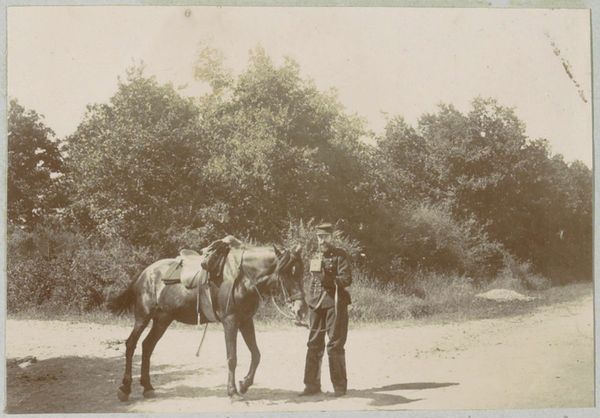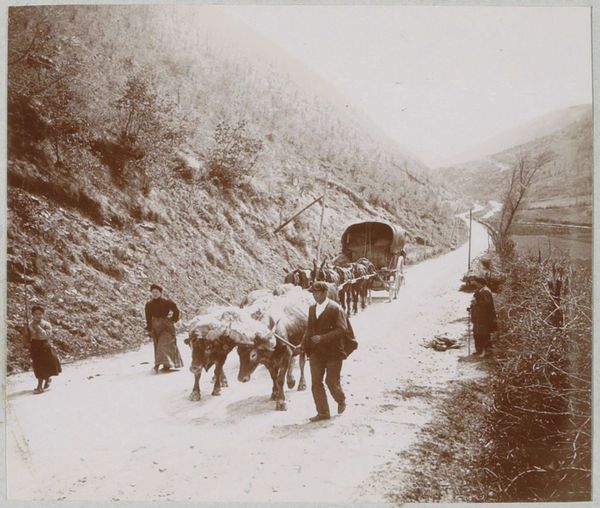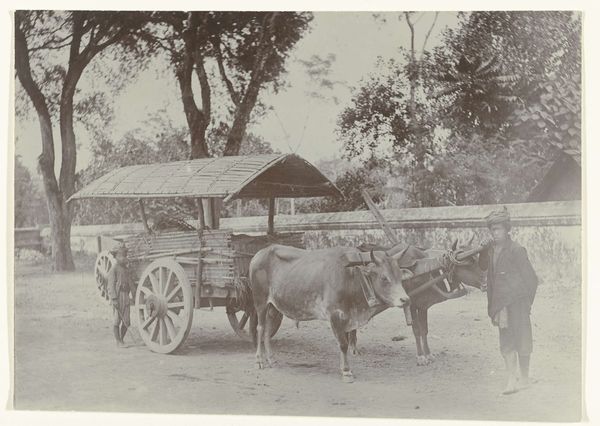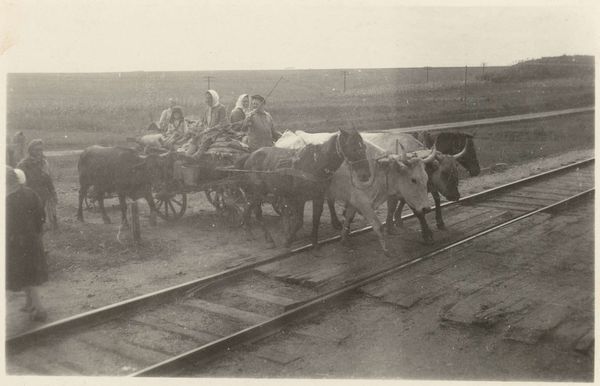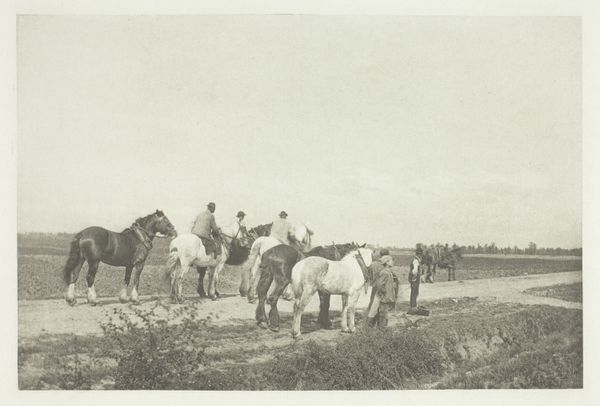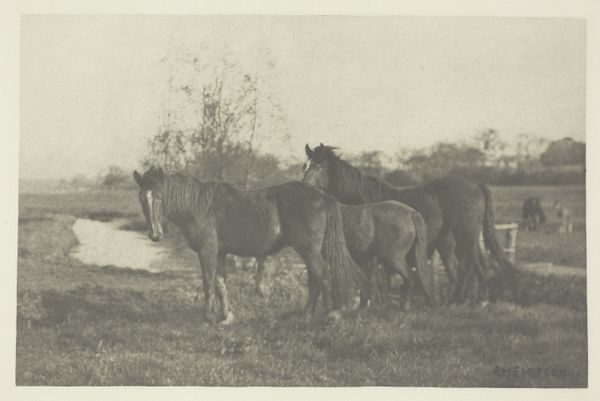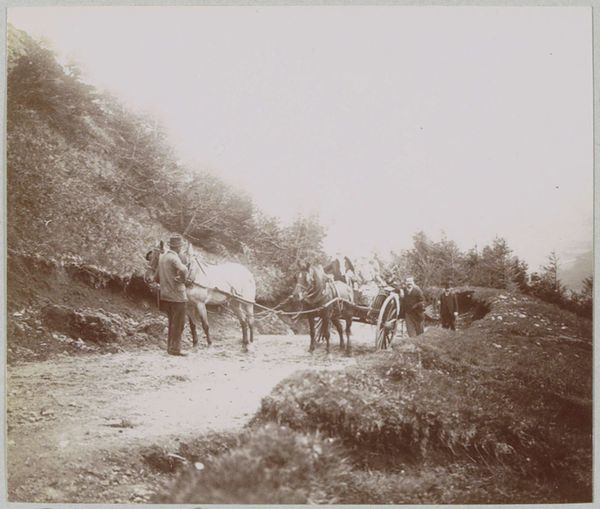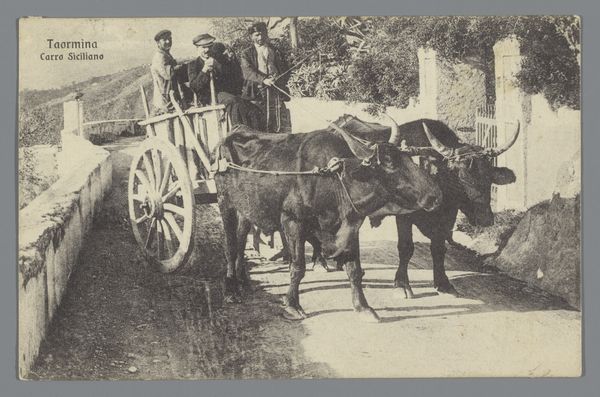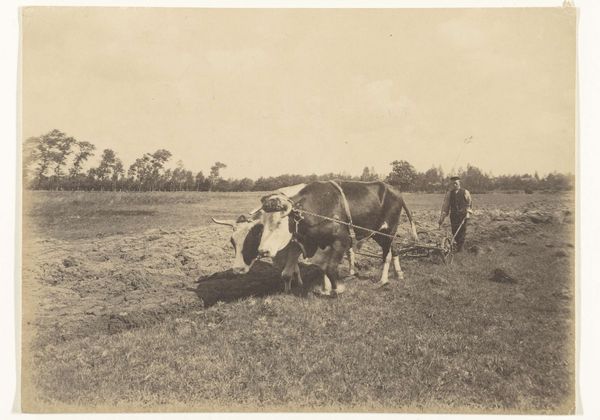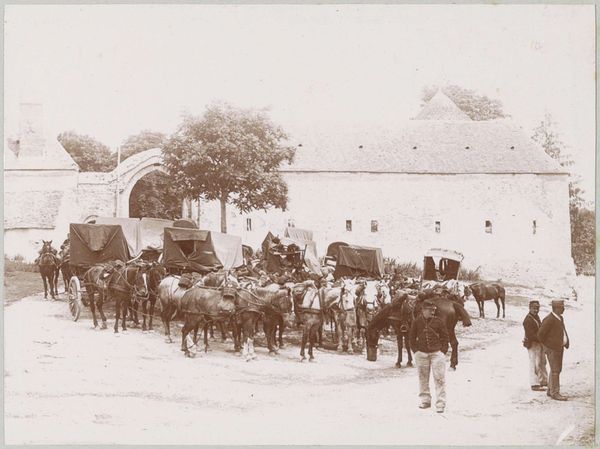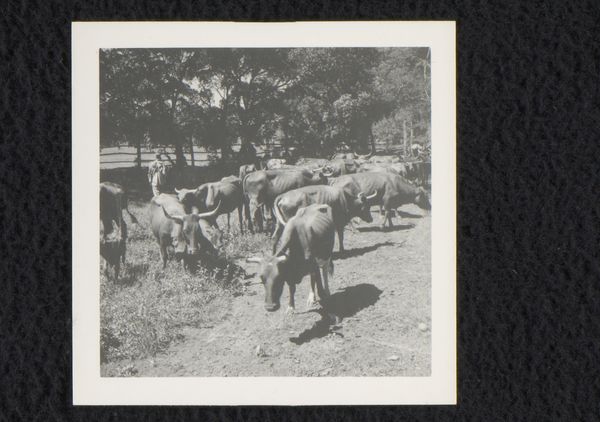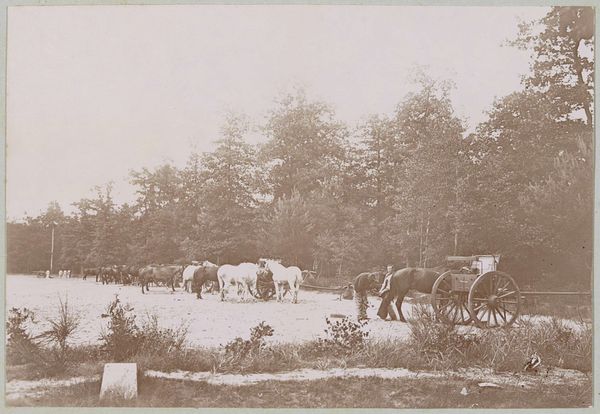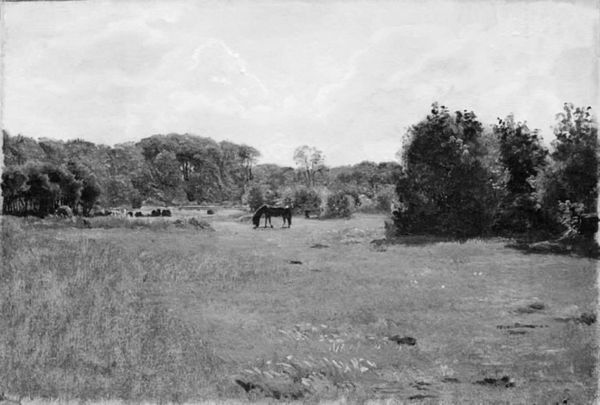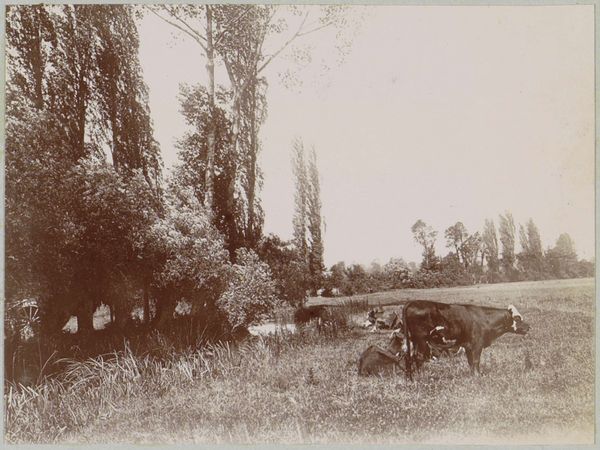
photography, gelatin-silver-print
#
black and white photography
#
landscape
#
black and white format
#
agricultural
#
photography
#
black and white
#
gelatin-silver-print
#
monochrome photography
#
genre-painting
#
realism
#
monochrome
Dimensions: height 50.5 cm, width 39.4 cm, height 40.0 cm, width 30.0 cm
Copyright: Rijks Museum: Open Domain
Editor: This is "Resting Cavalry Along a Railway," a gelatin silver print by George Hendrik Breitner, dated sometime between 1890 and 1910. The black and white image is really striking; the starkness makes the soldiers and their horses seem quite vulnerable, even though they’re part of the military. How do you interpret this work? Curator: Breitner, known for his unflinching realism, often captured the gritty reality of urban life. Here, the choice of portraying resting cavalry along a railway speaks volumes. The railway, a symbol of industrial progress, is juxtaposed with these figures of military might and tradition. What does that tension suggest to you about the Netherlands at the turn of the century? Editor: Maybe it's highlighting the societal shift, the move from agrarian to industrial? The cavalry, a traditional symbol of power, seems almost out of place alongside the modern railway. Curator: Exactly. And consider the social implications. Who benefits from this progress, and who is left behind? Are these soldiers protectors of the old order or participants in a new, potentially unsettling one? How might class tensions manifest in the everyday lives of people at that time? Think about the rise of social movements. Do you see any connection here? Editor: I do see how the railway tracks, the cavalry and the trees together highlight themes around modernisation, class division and military activity, capturing the complicated landscape of the period. It makes me consider how quickly things changed in such a short space of time. Curator: Precisely. Art, at its most powerful, invites us to question the status quo and confront uncomfortable truths about power, progress, and identity. What started as a stark black and white photograph now shows its vibrant socio-political story, something that may even resonate today. Editor: I completely agree. Thanks for illuminating that!
Comments
No comments
Be the first to comment and join the conversation on the ultimate creative platform.
